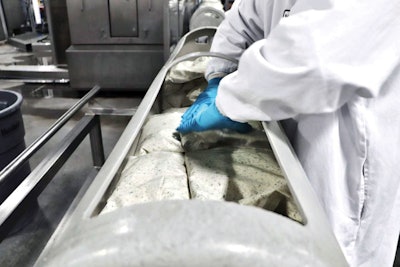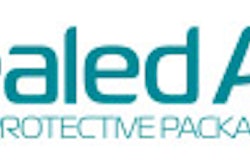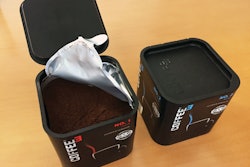Chairman’s Foods, Nashville, Tenn., is a custom food processor and packager that develops and executes private label or store brand products for a wide variety of in-store retail and foodservice operations. The core product line includes soups, wet prepared salads, sous vide cooked proteins, gravies, dips and fillings, and side dishes you might find, either on their own or constructed in-store, in fresh foods around the periphery of a supermarket, or in a grab-and-go retail setting.
In producing fresh food for the in-store retail channel, particularly for national chains, the company had always walked the tightrope of maintaining freshness in an environment that can greatly benefit from extended shelf-life. The answer had always been frozen food.
“We’ve been doing this going on 50 years, and the primary business we had for the majority of those years was a cook-chill facility,” says Chris Staudt, CEO of Chairman’s Foods. “Our central and most primary way of addressing food safety, as well as shelf-life, was through cook-chill methods, as a kettle-cook, chill, and freeze operation, and that’s where we were really well-versed in multiple different types of food products.”
Another route to greater shelf-stability could have been the addition of chemical preservatives, but Chairman’s opted against the practice in favor of clean labels, another emerging trend. Then, back in 2011, a project came along from one of its biggest supermarket chains. This chicken casserole-style dish pitted an unstoppable force against an immovable object. The customer asked for weekly delivery nationwide, but each delivered unit required 30 days of shelf stability upon receipt. This seemed impossible with unpasteurized fresh product without preservatives, and the customer wouldn’t accept frozen as an alternative. In fact, more and more of Chairman’s customers were asking for the best of both worlds with never-frozen meals that could last on the shelf. Something had to give, and that’s what led Staudt to high pressure processing (HPP) and Universal Pure, the largest provider of HPP in North America.
In the early days of HPP, the price tag of extremely large, costly HPP machines rendered the technology out of reach for all but the few food producers with the deepest pockets (and widest production footprints). But that opened up an avenue for third-party HPP service providers like Universal Pure to contract out capacity on such machines, and as a value-add outgrowth of this business, offer secondary packaging and end-of-line packaging services for all sorts of package types, shapes, and sizes, from bottles to containers to pouches. Still, there remains a perception that HPP is an expensive process. But now, almost a decade after cutting his teeth with the technology, Staudt reports that by looking at the price tag holistically and considering all of the logistics involved, the math is increasingly working out in HPP’s favor.
The first test-case and tipping point
A test run on that otherwise impossible chicken casserole bridged the gap between fresh and shelf stability in that it increased shelf-life from 21 days after date of manufacture to 60 days. Food integrity was maintained without spoilage with no need to freeze or add any chemical preservatives that would lengthen food ingredient lists.
That success so impressed Staudt and Chariman’s Foods that by 2017, 60% of products sold were fresh/refrigerated via HPP processing, compared to 100% frozen only a decade ago. And more recently, the company has vastly expanded its offering, mixing and matching products that may not even require any thermal treatment (cooking) at all.
“Cooking a product is intended to change the product’s structure,” Staudt says. “HPP doesn’t change the structure or integrity at all, so we can combine cooked with fresh product in-pack. It simply inactivates the food-borne pathogens and spoilage organisms for longer freshness.”
Some of the products may be take-and-bake style, some may require in-store or foodservice preparation, still others are designed to eat right out of the package, usually from a clamshell in an in-store deli or store periphery location.
“We use the HPP process to have that pathogen lethality step. We’re delivering it in a foodservice vacuum packed pouch—it’s not a flashy package,” Staudt says. “But what it is offering our customers, the retailers, is the ability to use it fresh and then put it into components that are sold at retail levels. All of the projects we work on are customer-driven and customer-specific. A lot of it is driven by the logistics, by the supply chain needs and timing needs to get the product to the shelf, to the consumer, while it’s still fresh and safe to eat.”
Today’s HPP process and logistics
Today, Chairman’s Foods uses two different Universal Pure locations, one outside of Dallas, the other outside of Atlanta, and on occasion a third Lincoln, NE, facility. Staudt says that the nationwide scale is helpful for national retail and foodservice customers, but given proximity to Nashville, the Atlanta-area location tends to be the destination for most product. There, Universal Pure operates three 350L JBT Avure HPP machines.
“The way the process works today, on a weekly basis we take a chicken salad [or other similar product] and we blend it in Nashville with all the fresh components. We then fill it in a foodservice pouch—an industrial-sized pouch of a little over four pounds filled—and then we’ll take that four pound pouch and we pack it, we load it up on a refrigerated truck, and send it to one of the Universal Pure locations,” Staudt says.
Mark Fleck, Universal Pure’s HPP consultant, says, “From Universal Pure’s perspective, working with Chris and his team at Chairman’s, was a win-win as we put our heads together to unlock the value of HPP to deliver the highest quality, clean label products for their customers.”
These pouches are composed of a common 5-mil rollstock HPP-gauge Cryovac film, and are filled and sealed either on a single Cryovac vf/f/s, or one of several VEMAG filler-fed Multivac horizontal thermoformers. The viscosity of the chicken salad, as well as most soups, salads, and sauces, means that it is volumetrically scaled, and does not require open-air scaling on a combination scale aimed at discrete product. A 5-bar seal is applied to every pouch to withstand the 87,000 lbs of HPP pressure.
Other applications destined for HPP include polypropylene tubs with clear lid film for ready-to-eat salads and dips. At many in-store delis, the 16-oz. PP tub with film barrier and lid is ubiquitous in carrying these types of products.
Filled pouches undergo metal detection before being case-packed into corrugated shippers that aren’t taped on top before being loaded into the refrigerated trucks. After the pouches go through the HPP process, they get a quick blow dry and date coding, they are hand packed into the original corrugated shippers. Only then are they sealed. Universal Pure can handle logistics in several ways, but in this case, Chairman’s Foods then begins freight management via a local 3PL out of the Universal Pure location.
“We manage the freight, but we have a good relationship with the Universal team,” Staudt says. “My logistics team and their logistics team work hand-in-hand to schedule inbounds, production of the HPP, and then the outbound as well. When we’re sending product in, every ounce is dedicated specifically to a unique location. They keep all that intact for us, and then help us to divvy it up in delivery as we direct them to.”
The 3PL doesn’t use traditional Less Than Truck Load (LTL) delivery since it builds combination trucks, consolidates loads, accomodating multiple loads on singular trucks making multiple stops. It’s similar to LTL, but instead of shipping small LTL shipments, Chairman’s is dedicating full trucks that will then have multiple route stops.
The last mile
Upon delivery to a retail or in-store retail or foodservice location, the HPP process effectively delays spoilage of the product in an unopened, refrigerated bag within whatever the pre-determined timeline dictates.
“We are always striving to deliver the freshest products to our customers with optimal shelf life when delivered to their door. Most of our customers need a minimum of 21 days of shelf life when the product is delivered to the distribution center, which allows them to get the product through the supply chain and to store shelves with maximum shelf life remaining. The value of HPP is to extend the shelf life of the primary components. But once the product is opened, the clock starts over, and at that point, the typical spoilage pattern starts to take over. Most products in the fresh perimeter are probably being sold within one to two days of being placed on the shelf.”
The underlying value proposition of HPP
The value of HPP for Staudt really becomes as much logistical as anything else. For a custom processer like Chariman’s Foods, the name of the game is extending shelf-life. As they produce, pack, and channel these products through HPP each week, everything is about timing, streamlining, and efficiency.
“One of the best ways to positively impact logistics is to streamline the packaging,” Staudt adds. “If you can get more product in your package, the more you can ship with less dead space. When these factors are added, you start to really impact the overall cost and realize what HPP brings to the table. For me, the price of HPP washes out due to logistics and the added shelf life.”
As previously mentioned, many companies list the cost of HPP as a barrier to entry. But the cost of HPP is mitigated by not having to use certain other ingredients and materials, many of which may act as end customer deterrents on an ingredient list, in a formula to extend shelf life or preserve a product. Also consider spoilage cost reduction—without any CO2 flush or vacuum seal on the pouches, Staudt says he’s still running it at a 99.5% yield.
“I talk about it a lot with my peers and competitors, as we often talk shop with each other. I tell them that HPP is a lot more affordable than you think, but you just have to do the math to look at all the different parts and pieces,” Staudt says. “Freight and spoilage and shelf life and sales—all those things come together into a single equation. And when you factor in everything, the math works out. A lot better than expected a lot of times.” -PW





























